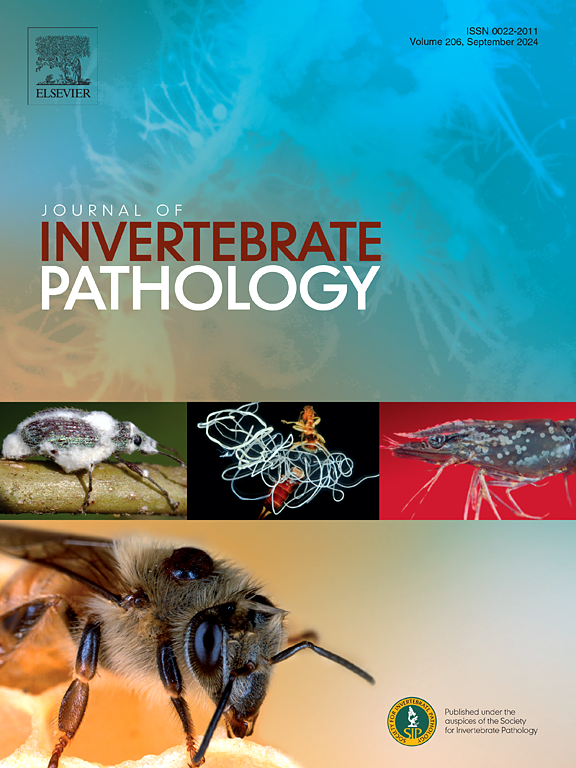Ingestion of polystyrene microplastics by Bombyx mori larvae disrupts midgut epithelial barrier integrity and potentially promotes susceptibility to BmNPV infection
IF 2.4
3区 生物学
Q1 ZOOLOGY
引用次数: 0
Abstract
Microplastics (MPs) are ubiquitous environmental contaminants with potential implications for host-virus interactions, which has attracted global interest because MPs have been recognized as emerging pollutants. Despite growing concern over MPs, their influence on viral infections, particularly in invertebrate models, remains poorly understood. In this study, we employed the silkworm, Bombyx mori, as a model organism to investigate the impact of microplastic (MP) exposure on viral replication and the gut microbiome. Real-time PCR and Western blotting results showed that exposure to MPs was accompanied by significantly increased BmNPV viral gene expression (ie-1, vp39, gp41) and VP39 production in the midgut, suggesting an increase in BmNPV replication. Exposure to MPs disrupted gut microbiome composition, leading to a decrease in beneficial bacteria (e.g., Vibrionaceae) and an increase in opportunistic pathogens, potentially contributing to increased susceptibility to BmNPV. Notably, the increased permeability of the midgut epithelium in response to MP exposure likely facilitated viral entry and enhanced infection. These findings underscore the potential risks of MPs in facilitating viral replication and systemic infection and emphasize the necessity of further research to explore the complex relationships between MPs, gut microbiota, and viral infections across different ecological settings.
家蚕幼虫摄入聚苯乙烯微塑料会破坏中肠上皮屏障的完整性,并可能促进对BmNPV感染的易感性。
微塑料(MPs)是普遍存在的环境污染物,具有潜在的宿主-病毒相互作用的影响,这引起了全球的兴趣,因为MPs已被认为是新兴的污染物。尽管人们越来越关注MPs,但它们对病毒感染的影响,特别是在无脊椎动物模型中,仍然知之甚少。本研究以家蚕(Bombyx mori)为模型生物,研究微塑料(MP)暴露对病毒复制和肠道微生物组的影响。Real-time PCR和Western blotting结果显示,暴露于MPs后,BmNPV病毒基因表达(ie-1、vp39、gp41)和中肠vp39的产生显著增加,表明BmNPV复制增加。暴露于MPs会破坏肠道微生物组组成,导致有益细菌(如弧菌科)减少和机会致病菌增加,这可能会增加对BmNPV的易感性。值得注意的是,MP暴露后中肠上皮通透性的增加可能促进了病毒的进入和感染的增强。这些发现强调了MPs在促进病毒复制和全身性感染方面的潜在风险,并强调了进一步研究MPs、肠道微生物群和不同生态环境下病毒感染之间复杂关系的必要性。
本文章由计算机程序翻译,如有差异,请以英文原文为准。
求助全文
约1分钟内获得全文
求助全文
来源期刊
CiteScore
6.10
自引率
5.90%
发文量
94
审稿时长
1 months
期刊介绍:
The Journal of Invertebrate Pathology presents original research articles and notes on the induction and pathogenesis of diseases of invertebrates, including the suppression of diseases in beneficial species, and the use of diseases in controlling undesirable species. In addition, the journal publishes the results of physiological, morphological, genetic, immunological and ecological studies as related to the etiologic agents of diseases of invertebrates.
The Journal of Invertebrate Pathology is the adopted journal of the Society for Invertebrate Pathology, and is available to SIP members at a special reduced price.

 求助内容:
求助内容: 应助结果提醒方式:
应助结果提醒方式:


